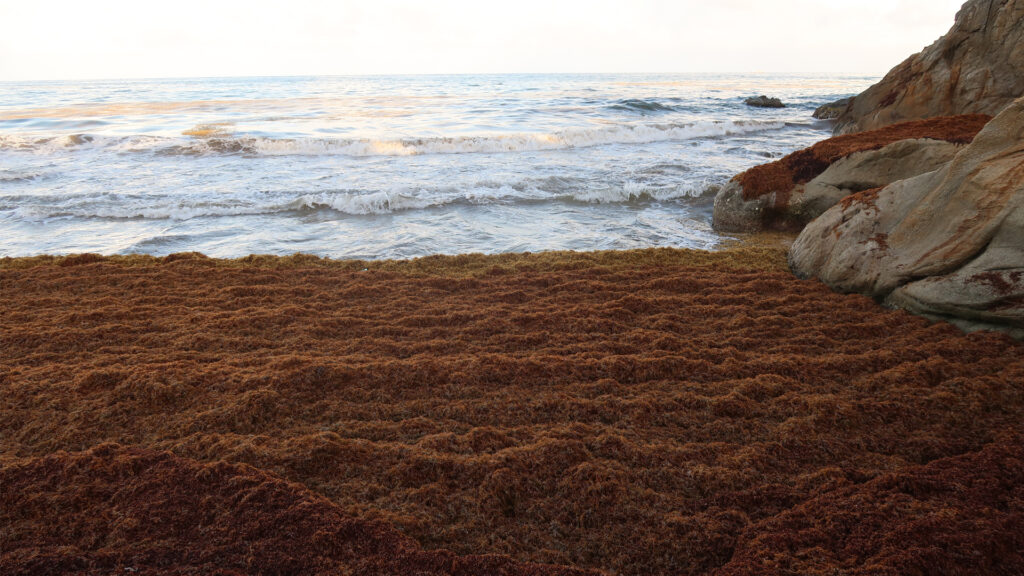A roundup of news items related to climate change and other environmental issues in Florida:
‘Green’ energy, plant food from Florida’s stinky seaweed? Ideas will be put to test | Miami Herald

Seaweed poses all sorts of problems when it piles up on South Florida beaches. It stinks, spoils the view and makes swimming icky. It’s also pricey to haul off to the landfill, which currently is the only viable disposal option.
Someday maybe a ton of sargassum might be worth its weight in, if not gold, maybe fertilizer.
Turning seaweed into plant food is one of six proposals that Miami-Dade is considering as part of a county effort to find new ways to deal with a seaweed surge that scientists expect climate change will only make worse. Other potential pilot projects could explore converting sargassum into building material, types of “green” fuel and even an additive that could help reduce erosion of the beaches where the sargassum winds up.
Almost the entire East Coast is sinking | The Messenger
As many as 95% of the counties along the East Coast of the U.S. are slowly sinking, according to a new study published on Tuesday. Though they are descending at just a millimeter or two per year, the sinkage adds to the growing list of hazards caused by rising seas that put millions of people at risk of flooding and displacement.
“Infrastructure damage due to subsidence has direct, indirect, short-term, and long-term consequences, such as disruptions of clean water supplies, transportation, education, and health care, economic stagnation, and a severe death toll,” write study authors led by Leonard Ohenhen, of Virginia Tech University, in the journal PNAS Nexus. “In many nations, land subsidence barely registers as an issue of public policy.”
For the new study, the researchers used satellite and other data to examine the vertical land motion of 172 counties along the East Coast. They found that a subsidence rate above zero is present in between 89 and 95% of those counties, exposing a total area just under the size of South Carolina to the effect.
Most money for endangered species goes to a small number of creatures, leaving others in limbo | Associated Press
Since passage of the Endangered Species Act 50 years ago, more than 1,700 plants, mammals, fish, insects and other species in the U.S. have been listed as threatened or endangered with extinction. Yet federal government data reveals striking disparities in how much money is allocated to save various biological kingdoms.
Of the roughly $1.2 billion a year spent on endangered and threatened species, about half goes toward recovery of just two types of fish: salmon and steelhead trout along the West Coast. Tens of millions of dollars go to other widely known animals including manatees, right whales, grizzly bears and spotted owls.
But the large sums directed toward a handful of species means others have gone neglected, in some cases for decades, as they teeter on potential extinction.
If you have any news items of note that you think we should include in our next roundup, please email The Invading Sea Editor Nathan Crabbe at ncrabbe@fau.edu. Sign up for The Invading Sea newsletter by visiting here.



